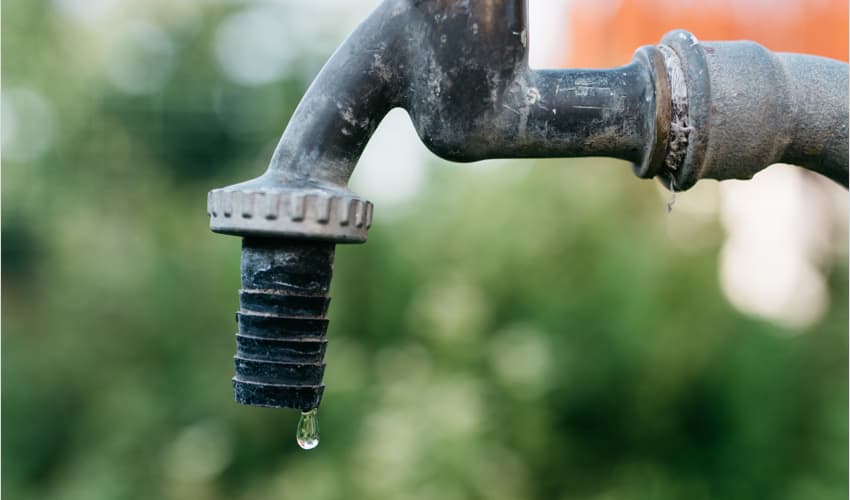This post in the next paragraphs on the subject of How to detect water leaks in your home is indeed attention-grabbing. Have a go and draw your own personal conclusions.

Leaks not just trigger waste of water but can additionally create unneeded damage to your house as well as advertise unwanted natural growth. Water leakages may go unnoticed given that many of the pipework in our house is hidden. By looking as well as understanding for everyday circumstances that cause leaks, you can safeguard your house from future leakages and unneeded damages. Today, we will check out 6 leakage triggers that may be creating your pipes to trickle.
Encroaching roots
The majority of water leaks start outside your home as opposed to inside it. If you notice an unexpected reduction in water stress, claim in your faucet, take time to head out as well as analyze your lawn. You could see damp patches or sinkholes in your yard, which may mean that tree origins are getting into water lines creating water to seep out. You can have your plumber look for invasion, particularly if you have trees or shrubs near your property.
Rusty water supply
As time goes by, your plumbing system ages and also rust such as rust may start eating away the pipelines. This could be the root cause of discoloration or bending on your pipes. This requires an evaluation with your plumber instantly. If our plumbing system is old, consider changing the pipelines because they go to a greater threat of deterioration than the more recent models.
Defective Pipeline Joints
The point at which your pipelines link is often the weakest link in the waterline. Pipeline joints can deteriorate over time, resulting in water leaks. The bulk of pipe joints are not conveniently visible. If you have noisy pipelines that make ticking or banging sounds, specifically when the hot water is activated, your pipe joints are probably under a great deal of pressure. It is advisable to have your plumber evaluate your system once a year.
Instantaneous temperature level changes.
Severe temperature level adjustments in our pipelines can create them to broaden and contract all of a sudden. This growth and contraction might cause fractures in the pipes, particularly if the temperature level are below freezing. If you kept an eye on exactly how your plumbing functions, it would certainly be best. The presence of the previously mentioned scenarios regularly indicates a high danger.
Poor Water Connectors
Sometimes, a leak can be triggered by loose hoses as well as pipelines that provide your home appliances. Usually, changing is what triggers the loosened water Connections. You might discover in the case of a washing equipment, a hose might spring a leak because of shaking during the spin cycle. In case of a water links leakage, you may notice water running directly from the supply line or puddles around your appliances.
Obstructed Drains
Obstructed drains might be irritating as well as inconveniencing, but they can in some cases end up triggering an overflow causing burst pipes. Keep removing any products that might drop your drains pipes that might obstruct them to avoid such aggravations.
All the above are root causes of leaks yet not all water leaks result from plumbing leaks; some leakages could originate from roofing system leaks. All leaks must be fixed instantly to prevent water damages.
Leaks not just trigger waste of water yet can additionally create unneeded damage to your home and also promote unwanted organic development. By understanding as well as looking for day-to-day scenarios that create leaks, you can safeguard your house from future leaks as well as unneeded damages. Today, we will look at six leak causes that might be triggering your pipelines to leak.
At times, a leak can be created by loosened hose pipes and pipelines that supply your devices. In instance of a water links leak, you may notice water running straight from the supply line or puddles around your home appliances.
How To Check For Water Leak In Your Home
How To Check for Leaks
The average household's leaks can account for nearly 10,000 gallons of water wasted every year and ten percent of homes have leaks that waste 90 gallons or more per day. Common types of leaks found in the home are worn toilet flappers, dripping faucets, and other leaking valves. These types of leaks are often easy to fix, requiring only a few tools and hardware that can pay for themselves in water savings. Fixing easily corrected household water leaks can save homeowners about 10 percent on their water bills.
To check for leaks in your home, you first need to determine whether you're wasting water and then identify the source of the leak. Here are some tips for finding leaks:
Take a look at your water usage during a colder month, such as January or February. If a family of four exceeds 12,000 gallons per month, there are serious leaks.
Check your water meter before and after a two-hour period when no water is being used. If the meter changes at all, you probably have a leak.
Identify toilet leaks by placing a drop of food coloring in the toilet tank. If any color shows up in the bowl after 10 minutes, you have a leak. (Be sure to flush immediately after the experiment to avoid staining the tank.)
Examine faucet gaskets and pipe fittings for any water on the outside of the pipe to check for surface leaks.
Undetected water leaks can happen without the home or business owner even realizing. If you suspect a water leak, but not able to find the source. It is time to contact a professional water leak detection service, The Leak Doctor.
How To Find a Water Leak In Your Home
https://www.leakdoctor.com/blog/How-To-Check-For-Water-Leak-In-Your-Home_AE197.html

As a devoted person who reads about Most Common Causes of Leaky Pipes, I thought sharing that article was a good thing. Are you aware of someone else who is serious about How to Find Water Leaks? Why not share it. Many thanks for going through it.
Address emergency plumbing promptly here.